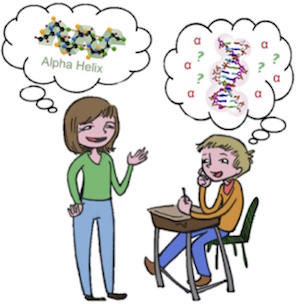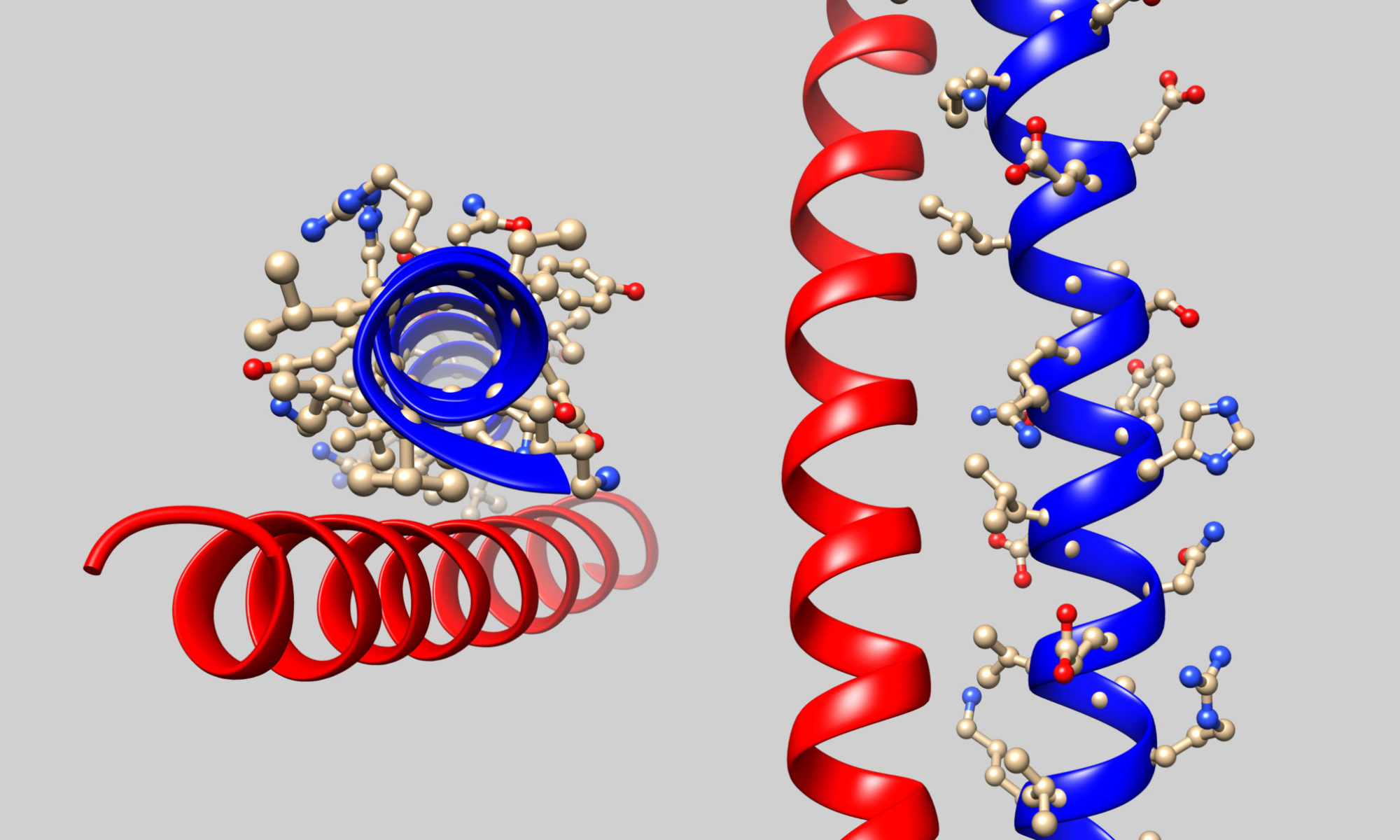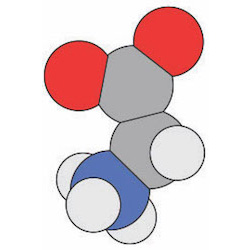
Visualization in the Classroom
Instructors often use biomolecular visualization (BMV) in our teaching. Through diagrams in textbooks, figures shown in class, or modeling activities, our students are flooded with macromolecular visual images. We hope (often expect!) that the students are having “aha!” moments with the renderings of cells, proteins, and complexes that we present. But, do the students really “see” what we see? Do they have the visual literacy skills necessary to glean the information that we expect them to understand from these biomolecular images?
A Framework for Assessing Biomolecular Visualization Skills
Since 2012, the BioMolViz group has been working to advance BMV instruction. Over the course of the project, faculty from over 10 institutions have participated in regular online meetings, culminating in a published Biomolecular Visualization Framework (Dries et al. BAMBED [2017]) defining 12 overarching themes, 27 learning goals, and 119 learning objectives. The aim is to populate the framework with assessment instruments targeting specific BMV learning goals and objectives. Instructors would be able to use the framework to identify the visual literacy skills that they wish to test; and, in a couple of clicks, instructors would have a targeted, peer-reviewed BMV assessment to use in their classroom or to modify to suit their needs.
Our Workshops
In 2017, BioMolViz was awarded seed funding (NSF-IUSE #1712268) to lead workshops to define biomolecular visualization competencies and write BMV assessments. Over a two-year period, we organized seven 1-day workshops to explore and establish best practices for assessment writing. Our process utilizes the BMV Framework to build targeted assessments that address specific learning goals and objectives. We apply a peer review process with a final analysis to ensure that images are accessible to colorblind readers. With our second round of funding (RCN-UBE #1920270), we are continuing these workshops and the development of our repository. If you are interested in joining our growing community of professionals dedicated to improving BMV instruction, then we’d be delighted to connect with you. Use the Contact page to email questions and to subscribe to our newsletter to learn about future workshops and events.
Steering Committee
Kristen Procko, University of Texas at Austin (Project PI, RCN-UBE co-PI, Group Director)
Josh T. Beckham, University of Texas at Austin (RCN-UBE PI)
Daniel R. Dries, Juniata College (RCN-UBE co-PI, IUSE grant PI)
Henry V. Jakubowski, College of St. Benedict (IUSE grant co-PI)
Roderico Acevedo, Westfield State University
Pamela Mertz, St. Mary’s College of Maryland
Walter R.P. Novak, Wabash College
Rebecca A. Roberts, Ursinus College
Alberto I. Roca, DiverseScholar
BioMolViz Fellows
Fellows are recognized for critical contributions to the project beyond workshop participation
Roderico Acevedo, Westfield State University (2021 Fellow)
Swati Agrawal, University of Mary Washington (2023 Fellow)
Shane Austin, The University of the West Indes (2021 Fellow)
Charmita Burch, Georgia Gwinnett College (2021 Fellow)
Kristin Fox, Union College (2022 Fellow)
Bonnie Hall, Grandview University (2022 Fellow)
Pamela Mertz, St. Mary’s College of Maryland (2021 Fellow)
Rachel Mitton-Fry, Denison University (2022 Fellow)
Venkatesh Nemmara, Rowan University (2021 Fellow)
Harry Rahn, University of Michigan-Dearborn (2023 Fellow)
Didem Vardar-Ulu, Boston University (2023 Fellow)
External Evaluators
Shelly Engelman, Custom Evaluation and Research Support
Kathleen Cornely, Providence College
Past Team Members
Paul A. Craig, Rochester Institute of Technology
Diane Dean, Education Consultant
Margaret A. Franzen, Mount Mary University (IUSE grant co-PI)
Laura Listenberger, St. Olaf College
Audrey Shor, Saint Leo University
Cassidy R. Terrell, Univ of Minnesota
Funding Support
This material is based upon work supported by the National Science Foundation (NSF) under grants RCN-UBE #1920270 and NSF-IUSE #1712268. Any opinions, findings, and conclusions or recommendations expressed in this material are those of the authors and do not necessarily reflect the views of the National Science Foundation.

